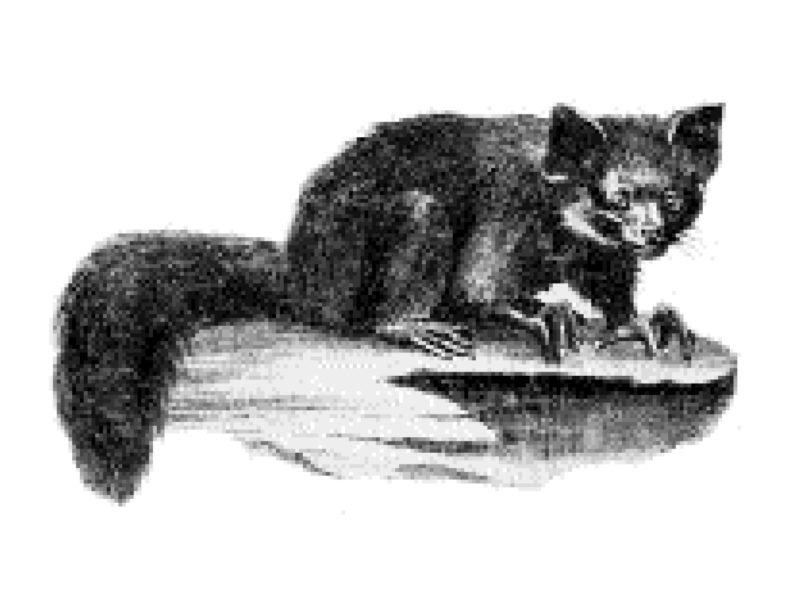Unless you frequent Madagascar, it’s unlikely you’ve encountered one of the most exciting, threatening, and thereby shunned mammals on the planet: a lemur called the aye-aye.
Ah, the aye-aye, poor pariah. The aye-aye is not shy, no: He marches around with abandon, or rather, wheels through the forest trees, in front of people. People in Madagascar, though, do not march around with abandon in front of the aye-aye. Instead, they regard him with absolute horror and as an omen of evil.
If an aye-aye is seen in a village in Madagascar, villagers make an effort to kill him. If the effort doesn’t work, villagers pack up their things and abandon their village in a collective exodus—anything to avoid the onslaught of wickedness the aye-aye is believed to bring, which mostly includes death.
BUT WHY?
Certain physical aspects of the aye-aye may contribute to this seemingly extreme reaction. Lemurs are nocturnal, and, in fact, since lemure means “ghost” in certain languages, like Latin, we can only guess that they appeared quite eerie to those earlier humans looking to name the little spectral freaks. But the aye-aye, solidly elected the most peculiar of primates, has a leg up on freakish looks. The aye-aye is coated in a frowsy fur, which gives him the appearance of having been left in the freezer too long. Large, black, membranous ears are said to swivel like radar dishes to pick up tiny sounds.
And the dentition of an aye-aye might arouse squeamishness even in the steadiest-tempered orthodontic professionals. Said more simply, aye-ayes have super-scary teeth. First of all, they lack canines, so there are unaesthetic gaps. Furthermore, very large incisors grow steadily from both the top and bottom jaws. They gnaw at great rates to grind their incisors down to manageable lengths, often on tough, tasty items like coconuts, which they consume while the coconuts are still attached to the trees. With their eminent teeth they make a 3-cm hole in the coconut—this takes about two minutes—then they devour the milk. But the way they wrestle free the coconut meat is their most disconcerting feature of all.
THE CREEPY FINGER
It is the aye-aye’s disproportionately long, bony, snakelike third finger that inspires the inhabitants of the world’s fourth-largest island to break their leases and search for new villages. Though the aye-aye lacks a beak (the standard equipment for drilling and digging insect larvae out of trees), he nonetheless occupies the same niche of the ecosystem that a woodpecker would—would that there were woodpeckers, which there aren’t in Madagascar. To complement his fearful teeth and swivelly ears, his fingers are the perfect instruments to grub for bugs. The aye-aye scampers about, high in the viny tangles of the moist forest, tapping and drumming his fingers along the tree limbs while listening closely for hollow spots.
When he finds one, he’ll gnaw away the bark and winkle out the larvae with a special finger.
This is how he finds his source of protein. He also uses these long third fingers for scooping out coconut meat at a truly greedy rate, plashing water into his mouth, licking nectar off of said finger, and, of course, pointing it sinisterly at villagers.
The call of the aye-aye varies. When displeased he says “fuff ”; when things turn worse he resorts to “ron-tsit.” “Aye-aye” is what he cries when he is being captured.
Due to deforestation and the survivalist concerns of the superstitious islanders, the aye-aye has been endangered since 1966. In 1966, there were only twelve aye-ayes in the world. Now, there are twelve in the United States—ten at the Duke Primate Center, two at the San Francisco Zoo. Worldwide, it can be approximated that numbers are now between 1,000 and 10, 000. And so to the aye-aye, I say, sing, don’t cry.





